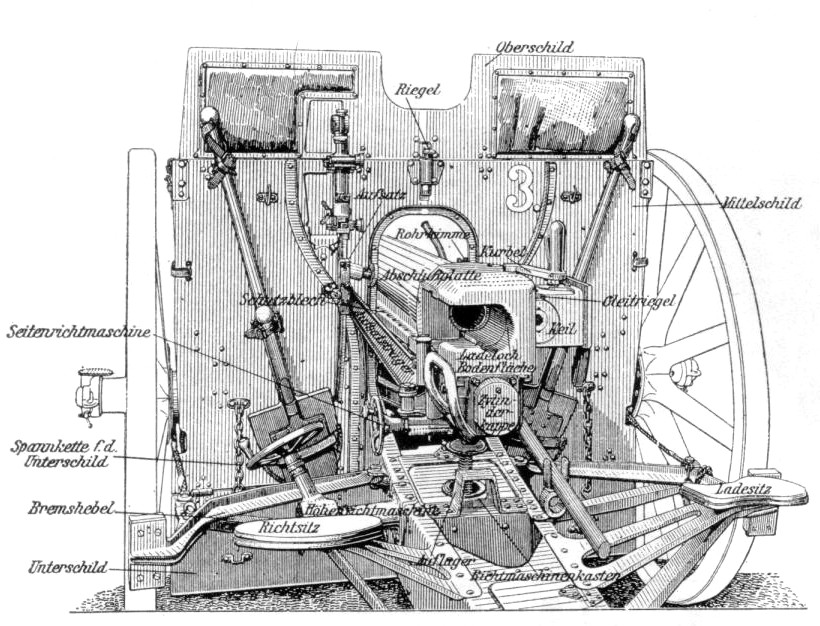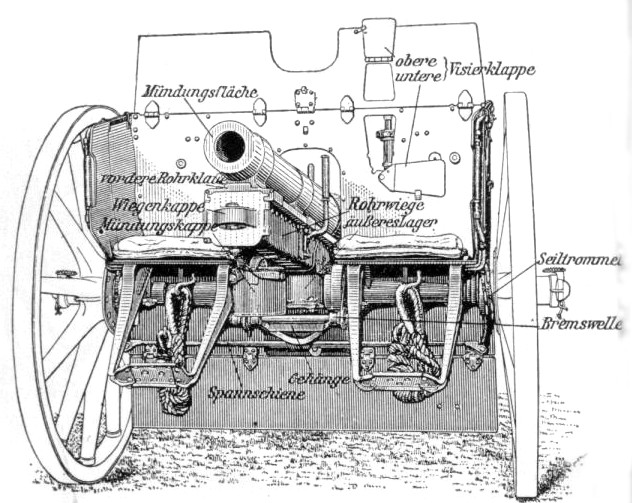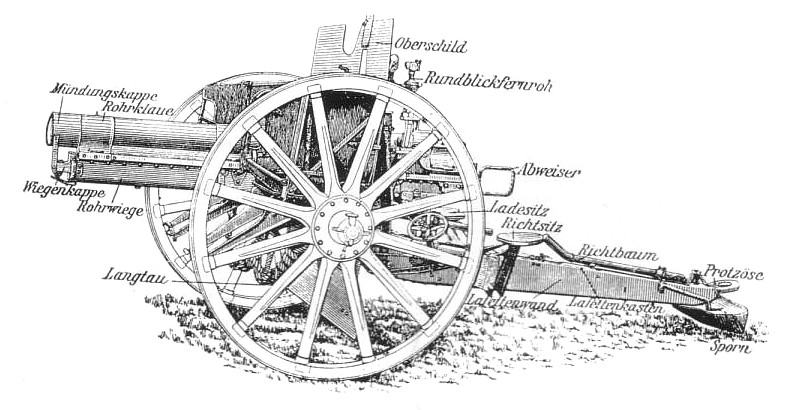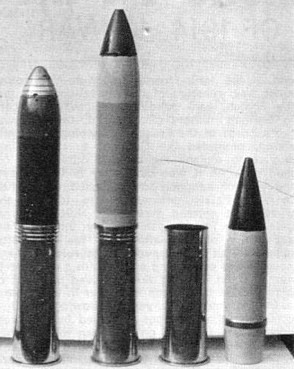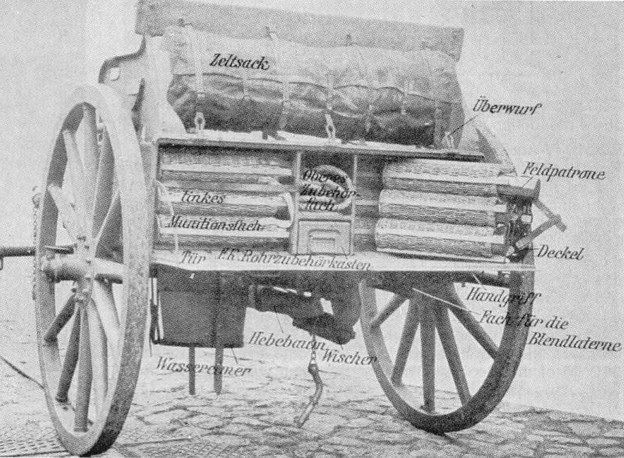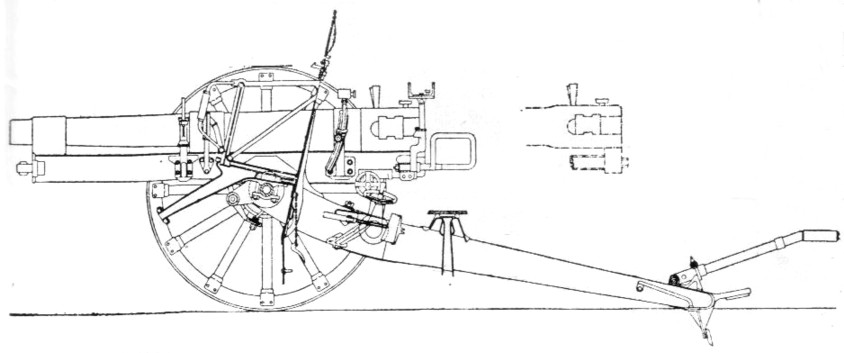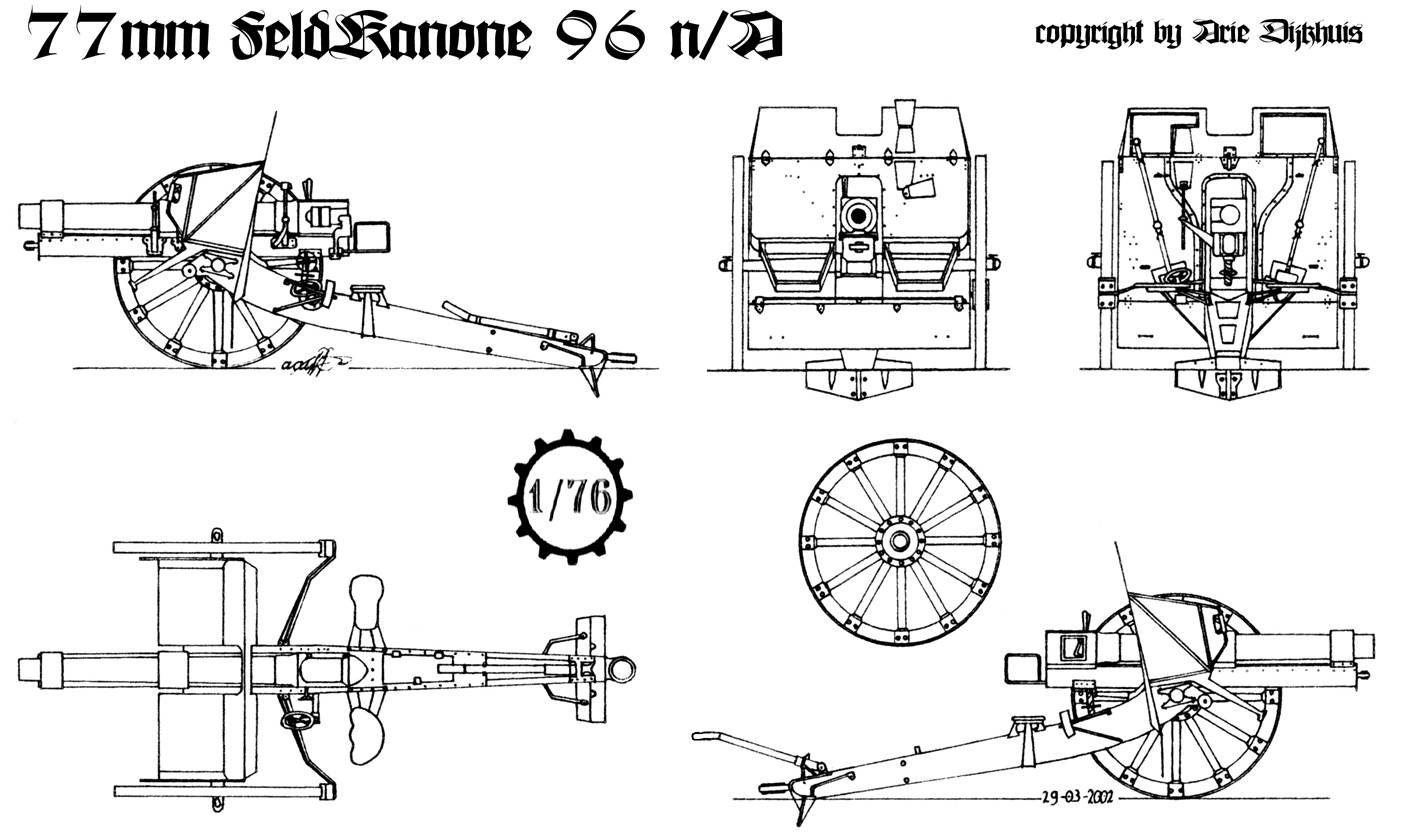7.7cm Feldkanone 96 n.A. (1)
The by far most numerous gun in the arsenal of the German Imperial Army in 1914 was the 7.7cm Feldkanone 96 n.A.. Germany entered the war with 5,086 of these Field Gun. Throughout the whole Great War, it remained the workhorse of the German Artillery, and though as such not as well known as many other, large calibre pieces, it was of course very important, being used on all fronts and in all battles.
Interestingly, the Feldkanone 96 n.A. started its career as the Feldkanone C/96, a Field Gun with rigid carriage and of surprisingly traditional design, with no shield and the old type of ammunition, with separate cartridges and projectiles. It was all result of the conservatism in the army’s leading circles. The Germans had just started to distribute the FK C/96 to the troops, when the French introduced their famous "75", a gun that revolutionized gun design forever. Overnight the French gun made the technically new German C/96 completely obsolete.
The problem was, that the German Army had used up most of it's allocated money on the old design, and only way to get a new gun fast, was to subject the C/96 to a major redesign. The job went to Rheinmetall and Krupp, who did a complete overhaul, in principle only keeping the barrel - to save money - and the wheels, but putting in on a new trail, a new hydro-pneumatic recoil system, a shield, and a new breech. The result was the Feldkanone 96 n.A., n.A. standing for neuer Art, "new model". Existing guns were mostly converted, and in addition to this many completely new guns, from the wheels up, were also manufactured. (It is thought that FK96s with serial nos below about 4500 are all remanufactured guns, above serial no. 4500 were built as FK96s).
It was a sound design, although not as spectacular as the French "75". The breech was of the single-motion sliding wedge type. The recoil was absorbed by a hydraulic buffer (glycerin) of pretty simple but sturdy design, complemented by four recuperator springs (set in the cradle). The barrel and cradle sat on the straight wheel axle, on which it was elevated and traversed by a simple mechanism, both cranking wheels being to the left, being operated by the gun layer. The trail was of the straight box type, open at the inner end, and with a spur piece with spike permanently attached to the end. It had a shield 4mm thick, set behind the axle, and divided into three pieces, with the upper and lower parts being foldable. (Lower and upper shield was always folded during transport.) The wheels had a double brake, that was used both during transport and as an additional means of securing the piece during firing.
The main ammunition was the FKG11 (FeldkanoneGeschoss = Field Gun Projectile) which was a Einheitsgeschoss, i.e. a sort of universal projectile, combining High Explosive with Shrapnel. It's weight was 6.85kg, containing 294 lead 10 gram bullets, and 0.25 kg of FP02, Füll-Pulver 02 i.e. TNT. This was complemented by the FG96, Feldgranate 96, 6.8 kilos heavy, with 0.19 kilos of FP02, plus a pure Shrapnel grenade, also 6.8 kilos heavy, but containing 300 10 gram lead bullets. In addition to this were star, smoke and a number of different blue-cross shells i.e. gas projectiles. The fuses used were principally the K.Z.11, a time fuse and the later L.K.Z.16 a contact fuse. The last were designed to explode immediately on contact, without any delay, hence the nickname given to these grenade by the British soldiers: "whizzbangs".
The design of the Feldkanone 96 n.A. must be seen against the background of German tactical doctrine prior to 1914. The German Army was wholly and fully dedicated to a swift, fast war of maneuver: home before the leaves fall and all that. Therefore mobility and speed of emplacement was given first priority when designing the gun. Which meant that the weight of the gun was kept as low as possible, leading, among other things, that the barrel was comparatively short, giving the gun a pretty low muzzle velocity, compared to other contemporary field guns.
But as the role of the gun was to follow closely the infantry in its sweeping movements on the battlefield, giving it close support, range was secondary. Indeed, firing at ranges over 5,000 meters was considered both rare and pointless - observation at these ranges was very difficult, among other things due to the small charges used in the german grenades, which gave comparatively tiny detonations, hard to spot. Actually, in many Corps firing at ranges over 5,000 meters was expressly forbidden before the war, considered to be a waste of ammunition!
And initially, the gun worked as thought. Indeed, it did excellent service, especially on the Eastern Front. For example during the Battle of the Masurian Lakes, this comparatively light gun was the only one capable capable of following and supporting the Infantry of the left flank in their moves through many times difficult terrain. (Guns like the heavier British 18-pounder or the french "75" would have had considerable difficulites in the same terrain.) And during the long, fast marches on the Western Front in the early autumn of 1914, the FK 96 n.A. also proved its value as a very mobile Field Gun. And the mostly shrapnel-based ordinance also worked pretty well.
But then the War of maneuver ended in the West, and the Trench War came in its place. And then the shortcomings of the piece became obvious. It was superior to the field guns of the enemy armies only in one respect: the mobility, but that was of course not such a big benefit during the stalemate. The field guns of its opponents could all shoot longer - the French "75", the Russian Putilov 02 and the British 18-pounder. (If ranges over 5.000 meter were required, the FK 96 n.A. had to have its tail dug into the ground, thus increasing the elevation.)
In addition to this, the "75" had a higher rate of fire and used better shells, and the 18-pounder bigger ones. In many times, this difference was in practice well near eradicated by the bigger number of german guns, or by the fact that the german field artillery also employed an effective light howitzer, the lFH 98/09. And also, the opponents guns also had problems, for instance the "75" was plagued by misfires, and by failing accuracy at longer ranges. (The "75" also had a more complicated design, making it more difficult to maintain or repair than the pretty sturdy FK 96 n.A..)
Still, it was obvious that although the FK 96 n.A. was far from a flop, it had obvious problems. And while both the French and the British tried to improve the performance of their main gun by simply improving the ordinance, the Germans were the only ones to introduce a completely new gun, the 7.7 cm Feldkanone 16, which used a longer barrel, plus a howitzer type carriage in order to increase the range of the gun. (The ammunition was the same as the FK 96 n.A..) But this came at a cost. That design was both more complicated and considerably heavier: the weight of a limbered FK 16 was 2256 kilos, as compared with the FK 96:s 1910 kilos. But it is proof of the soundness of the design of the gun, that when war in the spring of 1918 reverted to the type of conflict anticipated before in 1914, i.e. a war of movement, in many batteries the FK 16 was actually replaced by the older but more mobile FK 96.
- Specification
- Calibre77 mm
- Barrel length2080 mm
- Max. recoil1270 mm
- Barrel weight335 kg
- Min./Max. Elevation-12°/+15°
- Traverse4°
- Axle width1530mm
- Wheel Diameter1360mm
- Carriage weight635 kg
- Weight limbered1910 kg
- Weight emplaced1020 kg
- Shell Weight6.85 kg
- Muzzle Velocity465 m/sec
- Max. Range (theoretical)7,800 m
- Max. Range (practical)5,000 m
This information was taken verbatim from http://www.landships.info/landships/artillery_articles/Feldkanone_C96_nA_1.html and is used under a Creative Commons Attribution-NonCommercial-ShareAlike 3.0 Unported License. Please visit www.landships.info for more information.
